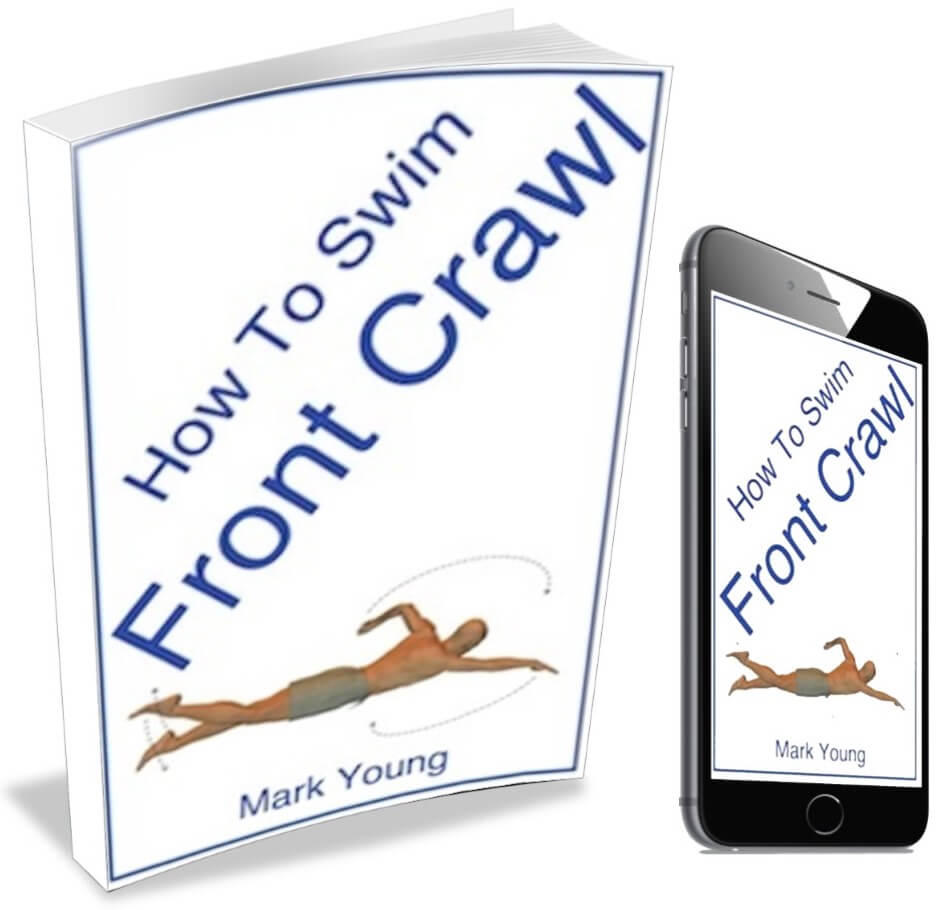- Swim Teach Home
- front crawl
- Front Crawl Breathing
- Front Crawl Swimming Tips
Front Crawl Swimming Tips
Could you give me some front crawl swimming tips, please? I am just starting to swim, and I'm having trouble with my front crawl. I feel like I'm wasting a massive amount of energy for not a lot of benefit. I get tired very quickly, and I'm sure I'm not doing the stroke correctly. My questions are these......
- What's the proper way of doing front crawl?
- How do I breathe properly while doing the stroke?
Any tips you could give me would be great.
What is the proper way of doing front crawl? Now there is a million-dollar question! By ‘proper way’ I assume you mean ‘easiest way’ or ‘most efficient' way?
Good swimming stroke is all about efficiency through the water and making your body as streamlined as possible. The more streamlined your technique, the easier and more efficiently your body moves through the water. So this begs the question, how do you make your body streamlined during front crawl?
A few elements of your technique need to be in place. Firstly you must have a horizontal body position throughout the entire stroke. Next, your hand entry into the water must be in-between your shoulder and nose line with a smooth finger and thumb entry. Behind you, your leg kick must be with your feet together. Maintaining this overall body position as your head turns to the side to breathe is essential, and with all this in place, you should have a streamlined and efficient front crawl swimming technique.
If only it were that simple, I hear you say. You asked the question about breathing correctly and turning the head to the side to breathe I have already mentioned. It is the physical act of breathing that is important here.
There are 2 types of breathing for front crawl, trickle breathing and explosive breathing. There is no right or wrong, just your own preference from what you find easiest. Trickle breathing involves breathing out into the water during the stroke. Most people find it easier because when you turn your head to breathe, you only have to inhale. Unlike explosive breathing, where you hold your breath during the stroke, and when the head turns to breathe, you must exhale and then inhale rapidly in the short time your head is turned. This can be very tiring.
There is also the forgotten factor of fitness and stamina during front crawl. This is one of the most physically demanding strokes (with the exception of the butterfly), and if you are new to swimming, it will test your fitness and stamina, regardless of your fitness level in other sports. It will, of course, improve the more you swim.
My eBook How To Swim Front Crawl contains 22 separate exercises that are not available anywhere else on our website. They are basic exercises for beginners to learn from scratch and they each have a diagram, photograph and loads of teaching tips and cover every aspect of the stroke. They are very easy to follow and I highly recommend it. Click the link below for more information.
 How To Swim Front Crawl
How To Swim Front Crawl$9.99

I am a member of the Amazon Associates Program and I will earn a commission from qualifying purchases at no extra cost to you.
Body Position For Front Crawl
I think I have a problem with my body position for front crawl. An onlooker advised me today that my rear end is out of the water when I do the crawl. I have been trying to breathe every fourth stroke instead of every second to see if I can improve my breathing and endurance. It is working, but this comment/criticism has thrown me. I am female, 70 years old, weigh 78 kilos, and I guess I have a large rear end. I swim 1500 metres twice per week.
From what you’ve described, you sound like a fairly well-established swimmer. Based on the fact that you regularly swim 1500 metres, I can’t imagine that your rear end being out of the water is causing too much of a problem to your technique. So it can’t be that bad!
However, the fact that someone has commented on it has raised it as an issue with you. One part of your front crawl technique that might cause your rear end to raise is your head position. If your head is deeper than it should be, it could cause a change in your body position elsewhere.
The water level should be at or around your hairline, and the back of your head should be out of the water. Any deeper and other parts of your body will rise up.
Another aspect of front crawl to think about is the depth of your arm pull. Pull too deep under the water, and your body will roll excessively and once again cause a change to your overall body position. Your arm pull should be along the water line just under your body.
Both of the above points may have changed slightly without you knowing, given that you are trying a different breathing pattern and your head, therefore, is in the water for longer in between each breath.
Just a thought about your front crawl breathing technique for you - ensure you are changing the side you breathe so that you avoid a muscle imbalance in your neck. Breathing every 3 arm pulls is optimal, therefore alternating the side you roll your head to. However, we are all different, and some breathing patterns work better for others. There is no right or wrong.
The next time someone comments on your rear end when you’re swimming, ask them to swim 1500 metres front crawl. I bet they can’t do it!
HOW TO SWIM FRONT CRAWL EBOOK: everything you need to master front crawl swimming stroke. 22 easy drills that focus on each part of front crawl technique. From body position to breathing and timing. Decades of teaching experience all packaged into 1 easy file. Download to your device and master front crawl TODAY! (click here for an instant preview).
Don't miss out! Click here for more details on how to get your copy.





